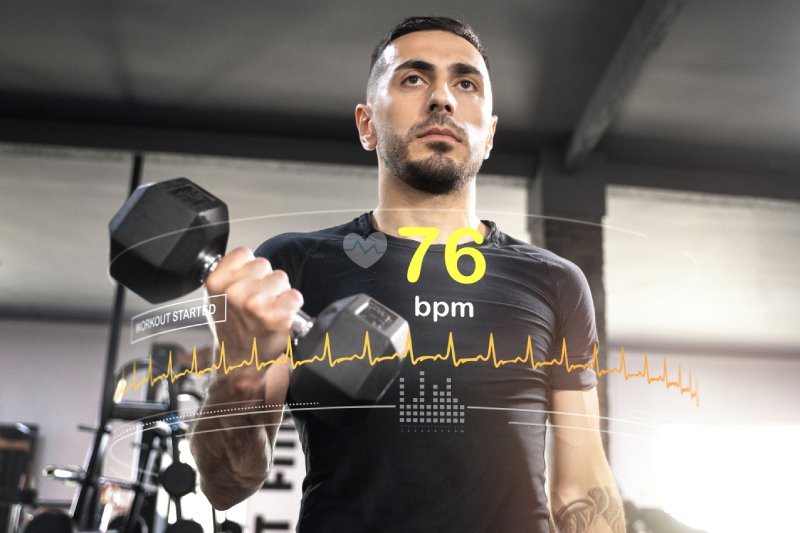Workouts that increase your heart rate are often called cardiovascular exercises and help your heart pump more blood, improving your cardiovascular health. These types of exercises include running, swimming, cycling, and brisk walking. During these exercises, your heart rate increases, your body consumes more oxygen, and your energy production increases. Regular cardio workouts strengthen your heart muscle and increase your endurance.
High-intensity interval training (HIIT) is also an effective method that increases heart rate. HIIT workouts alternate short periods of intense exercise with periods of rest or light exercise at a lower tempo. This type of training increases heart rate quickly and effectively, and also supports fat burning by accelerating metabolism. HIIT is an ideal option for those who want to get high efficiency in a short time.
Regularly doing exercises that increase heart rate not only increases heart health but also overall physical performance and endurance. However, individuals with heart disease in particular should definitely get checked by a doctor before starting such exercises. Exercises that are done with appropriate tempo and duration are an important protective factor for a healthy heart.

Benefits of Increasing Heart Rate
Exercises that increase heart rate provide many important benefits for the body’s overall health. First of all, increasing heart rate allows the heart to work more effectively. This strengthens the heart muscle and allows it to pump more blood with each beat. Regular exercises that increase heart rate increase the heart’s endurance and reduce the risk of cardiovascular diseases such as heart attack and high blood pressure.
The increase in heart rate also increases blood circulation in the body. This means more oxygen and nutrients are carried to the tissues and organs. The increased oxygen flow allows the muscles to work better and increases energy production. This increases physical performance and reduces fatigue. In addition, the functions of important organs, including the brain, are supported.
Increasing your heart rate during exercise helps speed up your metabolism. When your metabolism speeds up, your body burns more calories, which makes it easier to control your weight. Regular cardiovascular workouts help you burn fat and achieve a healthy body composition. This plays an important role in preventing health problems like obesity.
One of the benefits of heart rate-increasing exercises is the reduction of stress and anxiety. During physical activity, the body releases happiness hormones such as endorphins. These hormones improve mood, reduce stress, and improve sleep quality. Therefore, exercises that increase heart rate support both physical and psychological health.
In addition, regularly increasing the heart rate helps balance blood pressure. As the heart works more efficiently with exercise, the veins maintain their flexibility, and blood pressure remains at healthy levels. This helps control chronic diseases such as hypertension and improves quality of life in the long term.
Training that increases heart rate increases endurance. It provides less fatigue in daily activities, increased energy levels, and improved overall physical capacity. Especially as we age, it is very important to do such exercises to protect heart health and support functions. In this way, it is possible to live a more active and healthy life.

Cardio Exercises (Medium and High Intensity)
Cardio exercises are defined as physical activities that support heart and lung health and increase the body’s endurance. Medium and high intensity cardio exercises are performed by increasing the heart rate to a certain level and are used to achieve different physical goals. While medium intensity cardio exercises are usually performed with a heart rate between 50-70%, this rate can go up to 70-90% in high intensity exercises. Both intensity levels use the body’s energy systems in different ways and provide various health benefits.
Moderate-intensity cardio exercises include activities such as brisk walking, jogging, cycling, and swimming. This type of exercise causes a significant increase in breathing, but talking is usually possible. Moderate-intensity cardio is ideal for beginners or those who want to maintain their fitness. When done regularly, it supports heart health, helps with weight control, and increases overall endurance.
High-intensity cardio exercises include activities such as sprinting, HIIT (High Intensity Interval Training), and fast-paced cycling. In these types of exercises, breathing becomes quite difficult, and high energy expenditure occurs in a short period of time. High-intensity exercises allow for high calorie burning in a short period of time, speed up metabolism, and are very effective in increasing endurance. However, when exercising at this level, the person’s fitness level and health status should be taken into consideration.
Both levels of cardio exercise have positive effects on muscle and heart health. While moderate intensity exercises increase heart rate in a balanced way, high intensity exercises challenge the maximum capacity of the heart and strengthen the heart muscle. In addition, these exercises improve the circulatory system, regulate blood pressure, and contribute to the reduction of bad cholesterol levels.
The psychological benefits of medium and high-intensity cardio exercises are also important. Thanks to the endorphins released during exercise, stress is reduced, mood is improved and sleep quality is increased. Regular cardio plays a supporting role in the management of mental health problems such as depression and anxiety. In addition, exercises strengthen brain functions and increase cognitive performance.

Moderate and high-intensity cardio exercises offer varying levels of heart and overall health benefits. Moderate-intensity exercises support endurance and core fitness, while high-intensity exercises increase speed, power, and metabolic efficiency. It is important to do both types of exercise regularly and in a balanced manner to maintain a healthy and active life. When preparing an exercise program, the person’s physical condition and goals should definitely be taken into consideration.



